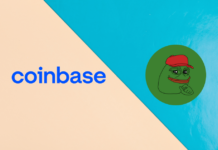The Polkadot is a next-generation blockchain that seeks to support a heterogeneous multi-chain framework. It is regarded as one of the most innovative projects in web3 and has garnered a lot of interest from a broad community of investors, developers, and users.
If you imagine each blockchain as a distinct dot, then Polkadot is a pattern made up of these dots. So, let’s take a deep dive into the Polkadot universe!
What is Polkadot?
Polkadot, a multi-chain application ecosystem, makes cross-chain interoperability possible on an unimaginable scale. The network enables users to transmit more than tokens between blockchains. Developed by Gavin Wood, a founding member of Ethereum, the open-source, permissionless Polkadot allows these networks to communicate actual data.
A “vision for a heterogeneous multi-chain architecture” is how the Polkadot whitepaper describes the network. But what does this imply? In a nutshell, the Polkadot network lays the foundation for a multi-chain community of blockchains. These so-called para-chains are capable of communication and parallel processing.
1/ Since the launch of Polkadot's staking dashboard and nomination pools, staking participation has skyrocketed on Polkadot, seeing 1500 new users every month.
Check the blog for the latest updates for the staking dashboard and staking on Polkadot: https://t.co/kh4EY4U3xA pic.twitter.com/6sPvfgpWcJ
— Polkadot (@Polkadot) February 14, 2023
Polkadot, therefore, aims to overcome the blockchain trilemma by being completely decentralized, inherently secure, and scalable for widespread adoption. Moreover, it is significantly more energy-efficient as it uses a proof of stake consensus method compared to a network like Bitcoin.
The Polkadot network’s native token, DOT, has Planck as its smallest unit. It facilitates payments, network administration, staking, reward incentives, transaction fees, etc. DOT has an unlimited quantity to incentivize the network. These adjust dynamically based on user staking participation rates.
How does Polkadot work?
Polkadot acts on a deeper level than a blockchain like Ethereum. It serves as a foundation for other cryptocurrency initiatives to build. While Ethereum and other comparable blockchains like Solana (SOL) and Cardano (ADA) are known as Layer 1 blockchains, Polkadot refers to itself as a Layer 0 blockchain.
Essentially, Polkadot is a sharded multi-chain network coordinated by a central Relay Chain that can handle data and transactions on multiple chains in parallel, known as Parachains. Due to its sharded architecture, the network divides itself into separate sections (shards). It significantly boosts the throughput as the Polkadot can concurrently handle transactions on each shard rather than sequentially across the entire network.
Therefore, multiple parachains can plug into Polkadot, benefiting from the network’s overall security while greatly enhancing scalability, interoperability, and cross-chain functionality while also removing the congestion, expensive fees, and incompatibility faced by legacy blockchains. Polkadot manages upgrades naturally without needing hard forks with a governance system run by owners of the DOT native token.
8/ The next update will look at parachains that support data, ID, privacy, storage, and infrastructure initiatives.
For further detail on the projects listed in this thread, @kusamanetwork parachains, and some thoughts on what lies ahead, read the blog:https://t.co/xXQXiFTnan
— Polkadot (@Polkadot) February 10, 2023
So, instead of the mining reward incentives provided in Proof-of-Work blockchains like Bitcoin, Polkadot uses a Nominated Proof-of-Stake (NPoS) consensus mechanism, rewarding users for locking up DOT tokens. Holders of DOT tokens can stake tokens to participate as Nominators, choosing to support up to 16 Validators as trusted candidates with their stake.
Collators on Polkadot maintain Parachain nodes, Fishermen nodes police the network, and Stakers interested in supporting the entire network can run a Validator node. Then, validators create new blocks, validate Parachain blocks, and guarantee finality.
How to be a validator in Polkadot?
We learned that a Polkadot validator is the entity that verifies transactions in the Polkadot network. But how do you become one? Read on! Since Polkadot uses a proof-of-stake model, validators are randomly selected to validate the block transactions. The network advises that validators must have extensive backgrounds in system administration.
Running a validator requires maintaining security, so it’s crucial that you can handle all technical problems independently. You risk losing some or all of your staked DOT if you incorrectly set up your validator node or if it isn’t secure.
You must also place a minimum stake to be a validator. At the very least, you’ll need enough DOT to open Controller and Stash accounts and some to pay transaction costs. The remainder of your stake can come from your DOT or your nominees. Be sure to research meticulously before participating to understand the requirements to become a nominator and the rewards.
Pink is the new green🟢
21 parachains [blockchains], 250+ dapps, 2500 nodes including 297 active validator nodes, and Polkadot remains the greenest blockchain. https://t.co/3V4FkMoIoC
— Polkadot (@Polkadot) August 12, 2022
Polkadot provides detailed instructions for configuring your validator server on their website. But what if you want to avoid taking these risks or don’t have the time to go through all the technical stuff?
Becoming a nominator is the answer. It is a superior option for staking your tokens if you need more technical expertise to be a Polkadot validator. You can stake your DOT and designate an experienced validator to receive rewards.
How to bridge DOT?
Another intriguing aspect of the Polkadot is that it enables communication between any other parachain and non-parachain. It accomplishes this by employing blockchain bridges. The network implements the following approaches to construct a bridge that is as decentralized and trustless as possible:
- Bridge Pallets: Uses a bridge pallet for chains unique to Substrate. (such as Kusama – Polkadot bridge, since both networks’ parachains use Substrate). On a side note, Substrate is the SDK with which you can build parachains.
- Smart Contracts: Smart contracts on the non-Substrate chain is necessary to serve as a bridge if the chain is not on the Substrate (e.g., Ethereum mainnet will have a bridge smart contract that initiates ETH transactions based on incoming XCMP messages).
- Higher-Order Protocols: If the chain (for example, Bitcoin) does not allow smart contracts, the network should use XClaim or other bridging protocols.
3. Connect your wallet, then bridge your $DOT from Polkadot to Acala:
Acala is a parachain built on Polkadot, so you need to make one transaction to send your DOT from the central 'hub' of Polkadot to Acala's DeFi-focused blockchain.
Go here to bridge: https://t.co/uLc2nHitmi pic.twitter.com/tA4EnXfkn7
— Acala (@AcalaNetwork) February 9, 2023
Web3 developers have already developed numerous bridges to link Polkadot with these external networks, and many more are in the pipeline. For instance, Interlay is a trustless bridge from Bitcoin to Polkadot, Snowfork is a general-purpose bridge between Ethereum and Polkadot, etc.
How to buy/sell DOT ?
How do you buy DOT if you are interested in the Polkadot ecosystem and want to be a part of it? Follow these three steps to purchase the token:
- Select a Cryptocurrency Exchange like Binance, Coinbase, or Kucoin, and open an account. (you can do so through a decentralized exchange like PolkaSwap or 1Inch too)
- Once you’ve created an account, you can fund it by linking a debit card or a bank account.
- Enter the Polkadot ticker symbol (DOT), then the amount you want to spend and click buy.
Follow these simple steps below to sell DOT:
- Sign in on the crypto exchange.
- If you have DOT somewhere else, send it to your Exchange address.
- As soon as your account gets the tokens, go to the New Order page, fill out the order form, and select SELL.
Great news for $DOT #hodlers 🤯 You can store & buy #DOT in #Klever Wallet K5.
Thanks to @klever_io & @Polkadot, our commitment to making #crypto accessible is stronger than ever 💪
Check out K5 now ⤵️https://t.co/d4ilWD4An0 pic.twitter.com/A6lJeTx9Ib
— Klever (@klever_io) February 15, 2023
How / where to stake DOT?
There are different ways to stake DOT, and they have varying difficulties.
- On a CEX, if you are a beginner
- In a liquid pool, if you know the risks
- With a wallet, if you have a supported one
- Run a Validator Node, if you are an expert
So, the easiest way is to stake DOT in a reputed CEX like Binance. Follow these steps to stake Polkadot on Binance:
- Create a Binance account or sign in with an existing account.
- From the top menu, select “Finance” then select “Binance Earn” from the drop-down list.
- Search for DOT and select it once you find it.
- You have a choice between two options – Staking and Flexible Savings. Select “Stake.”
- Read the APY information and choose the duration of your stake.
- Enter the sum you wish to stake. It can go as low as 1 DOT.
- Then select “Confirm Payment.”
Looking for decentralized, self-custody $DOT staking?
Here's a quick 4-step guide on how to stake your $DOT on Acala in 10 minutes or less for over 25% in annual DOT reward rate ⤵️ pic.twitter.com/6TxouuQGfM
— Acala (@AcalaNetwork) February 9, 2023
Polkadot holders can stake as much or as little as they’d like with Binance, and the reward programs make it even more appealing. However, remember that if you want to register with Binance, you’ll need to fill out a tonne of KYC information, and earnings will legally belong to them until you withdraw.
Polkadot has recently launched the Polkadot Staking Dashboard, transforming staking on the network.
Holders of DOT can now use a decentralized, non-custodial, and user-friendly staking tool instead of relying on third-party, centralized staking services. Moreover, nomination pools give on-chain pooling of staked DOT, lowering the required minimum staking amount to just 1 DOT while users maintain complete control over their assets and keys.
Conclusion
Polkadot has taken a unique approach to the proof-of-stake consensus and has created a framework that encourages true decentralization while putting safeguards to ensure the challenges brought on by decentralization are kept at bay.
The protocol lowers the barriers separating different blockchain ecosystems and enables direct communication between them.
Read the second part of the article for a deeper dive into the Polkadot ecosystem!
⬆️ For more cryptocurrency news, check out the Altcoin Buzz YouTube channel.
⬆️ Our popular Altcoin Buzz Access group generates tons of alpha for our subscribers. And for a limited time, it’s Free. Click the link and join the conversation today.




























